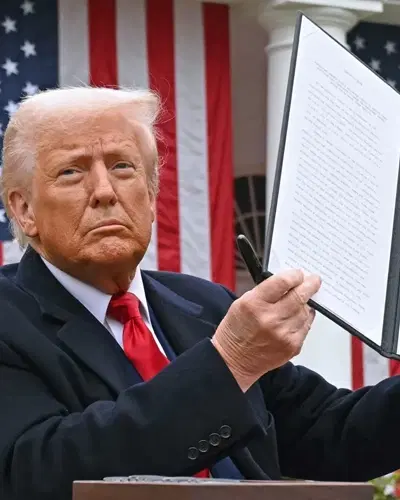Impact on Dubai property, business, rental yield, construction cost and more after India–US Trade War: -
1. Impact on Indian Buyers in Dubai Property
As you know, Indians are the largest group of foreign buyers in Dubai real estate due to its connectivity and property appreciation. This could lead to a significant impact following the trade war.
-
If the Indian rupee weakens because of tariffs or trade pressure, buying property in Dubai (priced in AED/USD) becomes more expensive
-
This may reduce mid-range Indian investments, but wealthy investors may still buy as a way to protect their money in USD-linked assets
Example:
If 1 AED = ₹22 today, a property priced at AED 1 million costs ₹22 million
If INR weakens to 1 AED = ₹25, the same property suddenly costs ₹25 million
For mid-income Indian buyers, this 3 million rupee difference can delay or cancel the purchase because Indian buyers will never purchase an expensive property; rather, they can wait for the right time to buy their future property.
2. Impact on Business & Trade via Dubai
Dubai acts as a trade bridge between India, the Middle East, and the world
-
If Indian exporters lose some US market access, many will re-route trade through Dubai to reach Europe, Africa, or other regions
-
This creates more demand for warehouses, offices, and housing for workers in Dubai
BELOW IT IS WELL EXPLAINED TO UNDERSTAND ITS IMPACT ON DUBAI BUSINESS
Indian companies face tariffs selling to the US directly
Example: An Indian textile exporter selling shirts to the US suddenly faces a 15% tariff.
They route goods via Dubai
Instead of shipping directly, goods are exported to Dubai’s free zone, repackaged, and then exported to the US or other markets with lower trade restrictions.
Dubai gains business
-
More shipping traffic at Jebel Ali.
-
More warehouse demand in free zones like JAFZA and Dubai South.
-
More jobs for logistics, trade, and finance professionals.
3. Impact on Rentals & Housing Demand
-
More companies and professionals moving into Dubai means higher demand for rentals
-
Even if property sales slow slightly, rental yields could rise, which is good for buy-to-let investors
Take a deep look at how rentals can improve in Dubai after the trade war:
1. More Businesses Relocating via Dubai
-
If Indian companies face hurdles in selling directly to the US, they may use Dubai’s logistics and free zones to re-export goods.
-
This increases demand for offices, warehouses, and staff housing, which boosts rental demand.
2. Stronger Expat Inflow
-
Dubai already has over 3.5 million expatriates (about 88% of its population)
-
Trade disruptions can drive more professionals to relocate to Dubai as companies shift supply chains
-
More people = higher demand for rentals, especially mid-range apartments near business hubs
3. Rental Yields in Dubai Already High
According to the survey, apartments are turn out to be the best of all property types, where they are particularly manageable, affordable and attractive, check below: -
-
Apartment rents in Dubai grew ~21% year-on-year
-
Villa rents grew ~13% year-on-year
-
The current gross rental yields average in Dubai is 6–7% which is higher than global property hubs such as London (3-4%) or New York (4-5%)
-
With more relocations from India and other countries, these yields can rise further.
4. Mid-Market Purchases May Slow, Rentals Rise
-
If the rupee weakens (say by 6–10%), some Indian buyers may delay property purchases.
-
Instead, they will choose to rent in Dubai until the currency stabilises. This keeps rental demand strong.
4. Impact on Construction Costs
-
If tariffs push up global prices of steel, energy, or shipping, Dubai’s construction costs may rise slightly (about 3-4%)
-
But since India and the UAE have a free trade agreement (CEPA), the direct cost impact should be limited
DO YOU WANT A PROPER EXPLANATION ON IT, THEN CHECK BELOW: -
Raw Material Prices
-
Steel Aluminum: If the US puts tariffs on Indian steel, India may try to sell more of it in other markets, including the Middle East
-
Example: If India lowers export prices to stay competitive, Dubai developers may actually benefit from cheaper Indian steel
-
But if shipping/logistics costs rise because of global trade disruptions, the final delivered price in Dubai could still go up
2. Currency Fluctuations
-
The trade war could weaken the Indian Rupee (INR) against the US Dollar. Since the UAE Dirham (AED) is pegged to the USD, Indian exports to Dubai might become cheaper in AED terms
-
Example: A Dubai construction company importing tiles from India might pay less in dirhams if the rupee drops
-
However, volatility in currency can make pricing unpredictable, leading contractors to add risk premiums to project budgets
Let us explain to you with digits to get a better understanding of currency fluctuations: -
-
Suppose before the trade war:
-
$1 = ₹83
-
India exports $10 billion worth of goods to the US.
-
After tariffs:
-
India’s exports fall to $6 billion.
-
Less USD comes to India.
-
Demand for dollars increases in India (for imports like crude oil).
-
As a result, the rupee weakens to $1 = ₹86. So this is how it is going to bring currency fluctuation after the trade war.
3. Shipping & Logistics Costs
-
Trade wars often disrupt global shipping routes, increase freight charges, or cause container shortages.
-
Example: If a container shipment of Indian cement to Dubai costs 10% more due to higher global freight rates, that adds directly to construction costs.
Example: If Indian exporters send $1 million worth of garments to the US, and tariffs increase by 15%, the importer may reduce the volume of shipments to control costs. Smaller shipments mean less container utilisation, which will shoot up per-unit freight charges.





